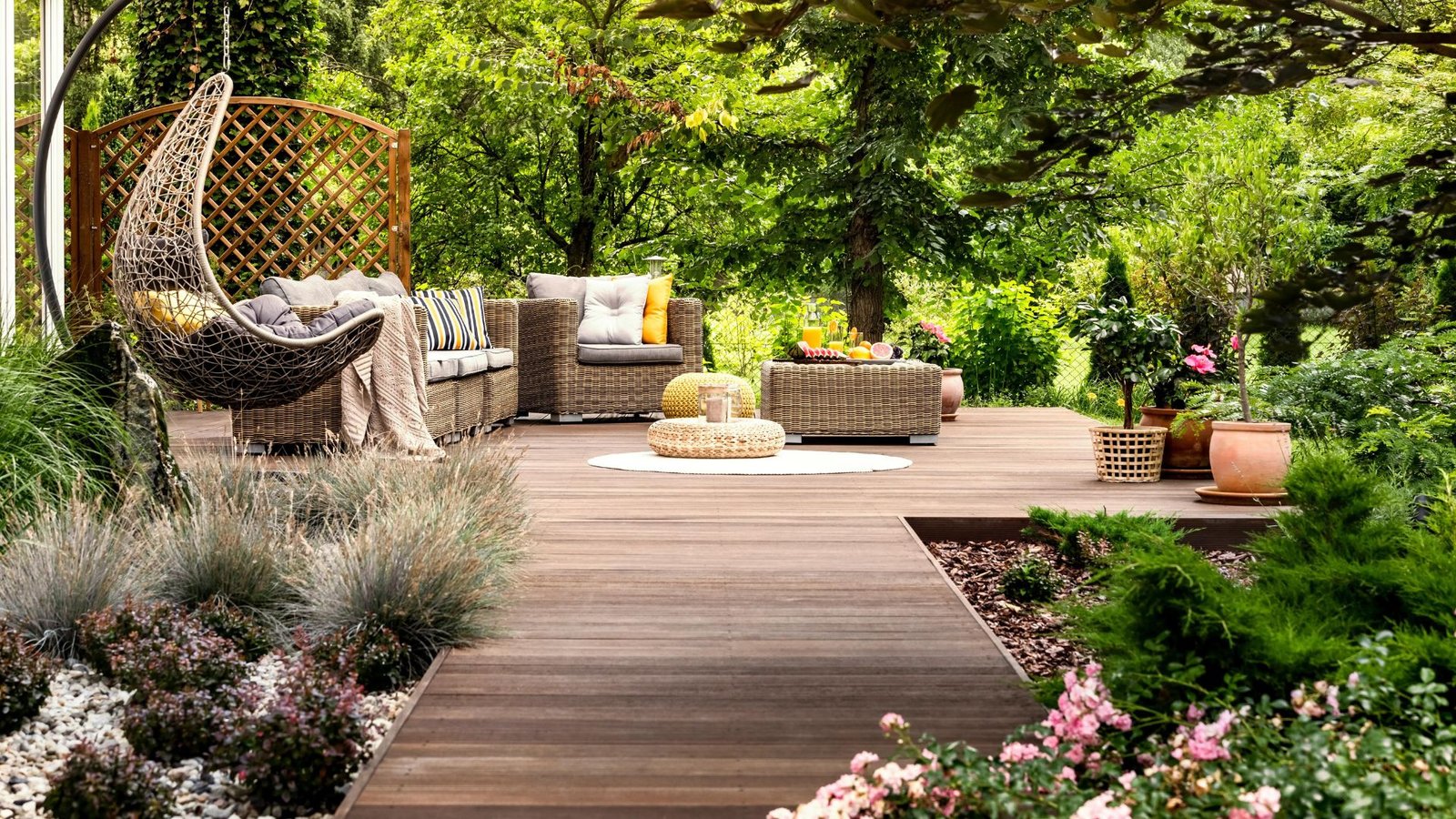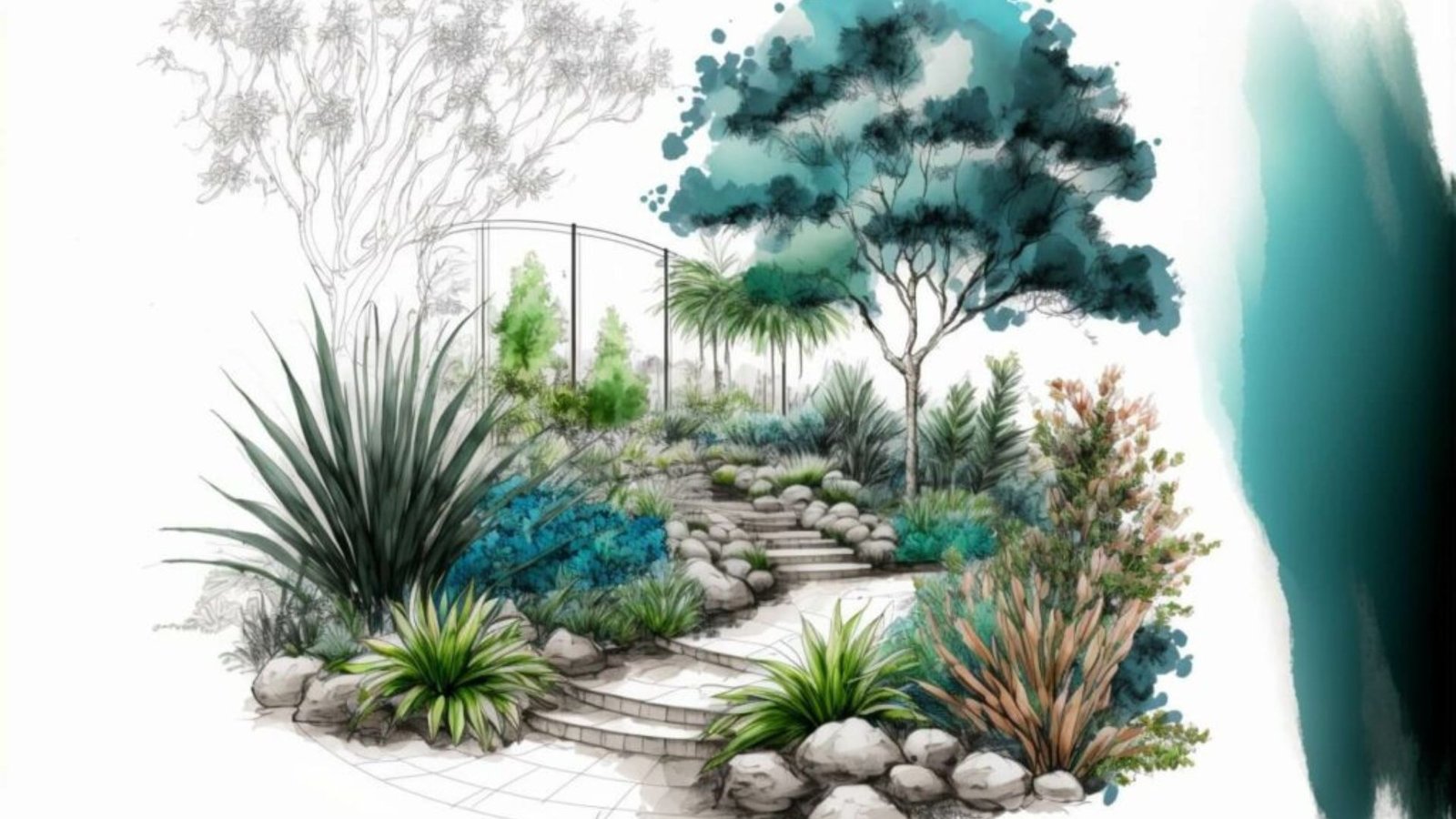How to use Landscaping to enhance Architectural Design
Landscaping plays a crucial role in architectural design, complementing buildings and creating harmonious environments. From enhancing aesthetics to improving functionality and sustainability, strategic landscaping can transform spaces into inviting and sustainable places. Here’s how architects can effectively utilize landscaping to enhance architectural designs.
1. Integration of Green Spaces
Integrate green spaces such as gardens, lawns, and courtyards around buildings to soften architectural lines, provide natural shading, and create a welcoming atmosphere.

2. Emphasis on Native Plants
Incorporate native plants and vegetation that thrive in the local climate and require minimal maintenance, promoting biodiversity and reducing water consumption.
3. Framing Views and Focal Points
Use landscaping to frame views of architectural features or focal points, guiding the eye and enhancing visual interest both inside and outside the building.
4. Pathways and Circulation Routes
Design pathways and circulation routes through landscaped areas to connect different parts of the building complex, promoting accessibility and encouraging exploration.
5. Sustainable Landscaping Practices
Implement sustainable landscaping practices such as rainwater harvesting, xeriscaping, and using permeable surfaces to manage stormwater runoff and reduce environmental impact.
6. Climate Responsive Design
Adapt landscaping designs to respond to local climate conditions, incorporating windbreaks, shade trees, and natural ventilation corridors to enhance comfort and energy efficiency.
7. Outdoor Living Spaces
Create outdoor living spaces like terraces, patios, and seating areas surrounded by landscaping to extend usable space, encourage social interaction, and improve quality of life for occupants.
8. Visual Continuity and Cohesion
Ensure visual continuity and cohesion between architectural elements and landscaping features, using materials, colors, and textures that complement each other harmoniously.
9. Noise Reduction and Acoustic Benefits
Utilize landscaping to buffer noise pollution from surrounding areas, incorporating vegetation and earth berms to enhance acoustic comfort within the built environment.
10. Artistic and Sculptural Elements
Integrate artistic and sculptural elements into landscaped areas to add aesthetic value, create focal points, and reflect the cultural or historical context of the architecture.
11. Edible Landscaping and Urban Agriculture
Incorporate edible landscaping elements such as fruit trees, herb gardens, or vegetable plots to promote sustainability, food security, and educational opportunities within the community.
12. Lighting Integration
Plan for integrated lighting within landscaped areas to extend the usability of outdoor spaces into the evening hours. Threfore, enhancing safety and creating visual interest.
13. Seasonal Variation and Plant Selection
Select plants with varying seasonal interest to ensure year-round visual appeal and adaptability to changing environmental conditions throughout the year.
14. Wellness and Biophilic Design
Apply biophilic design principles through landscaping to connect building occupants with nature, reduce stress, and improve overall well-being through exposure to greenery.
15. Maintenance Considerations
Consider maintenance requirements and long-term upkeep of landscaped areas during the design phase. Hence, ensuring sustainability and cost-effectiveness over the building’s lifespan.
16. Accessibility and Inclusivity
Design accessible pathways and seating areas within landscaped spaces to accommodate people of all ages and abilities. Therefore, promoting inclusivity and universal design principles.
17. Environmental Benefits
Highlight the environmental benefits of landscaping such as air purification, carbon sequestration, and temperature moderation, contributing to healthier urban ecosystems.
18. Community Engagement and Participation
Involve community members in the design and maintenance of landscaped areas to foster a sense of ownership, pride, and stewardship within the neighborhood.
19. Green Roof and Vertical Gardens
Explore opportunities for green roofs or vertical gardens to maximize green space in urban environments, reduce the urban heat island effect, and improve building energy efficiency.
20. Evaluation and Adaptation
Regularly evaluate the effectiveness of landscaping strategies post-occupancy, gathering feedback from users and making adjustments as needed to optimize functionality and aesthetics.
Conclusion
Landscaping is a powerful tool in architectural design, offering aesthetic, environmental, and functional benefits that enhance the overall quality of built environments. By integrating green spaces, native plants, sustainable practices, and artistic elements, architects can create harmonious and resilient spaces that improve well-being, connect people with nature, and contribute to sustainable urban development.



